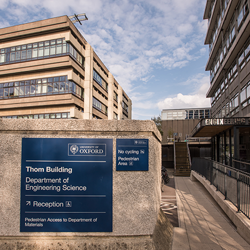Biography
Leo (XiaoHang) Fang is a post-doctoral research fellow in computational fluid dynamics. His research interests are in turbulent combustion, and especially novel combustion model development and novel propulsion systems simulation.
Research Interests
Conditional Source-term Estimation
Conditional Source-term Estimation (CSE) is a model developed to close the chemical source-term in averaged transport equations for non-premixed turbulent combustion. It takes advantage of the same closure approximation as is used in Conditional Moment Closure, but doesn’t add any dimensionality to the equations. It can be applied to either spatially filtered equations (as in Large Eddy Simulation – LES) or Reynolds Averaged contexts.
End-gas deflagration to detonation transition (DDT) in a close chamber
Recently the energy crisis and environmental pollution have obliged engine manufactures to realize higher thermal efficiency and lower emissions to meet stringent laws. Many energy-saving technologies have been put forward and as one of the most potential technologies, engine downsizing with supercharging has been followed with interest due to its significant advantages in light weight and compactness. Knock is an inherent constraint on the performance and efficiency of downsized spark ignition (SI) engines since it limits the maximum compression ratio that can be used with any given fuel. Super knock is a new engine knock mode found in downsized spark ignition engines. It can lead to a very high peak pressure ( ∼300 bar) and pressure oscillation ( ∼100 bar), which could damage the cylinder or piston in one engine cycle. Some progress has been made through experiments in observing super knock where DDT is likely to occur in engine end-gas, however understanding of the flame-shock interactions and end-gas autoignition with induced strong pressure oscillation in confined space is still limited. This study focuses on numerical simulation of engine end-gas detonation and DDT transition in a confined space.
Novel propulsion system development
Detonation engines, pulse detonation engines (PDE) and rotating detonation engines (RDE), have received significant research interests for several decades. The utilization of detonation for air-breathing propulsion would require steady forward propagating detonation waves. Temporal and spatial instabilities in complex detonation systems were reported in practical systems, including three-dimensional (3D) cellular structures an done-dimensional (1D) pulsating (galloping) detonations. Pulsating instability with longitudinal oscillations of the detonation front have also been experimentally observed when a blunt body travels through a reactive gas at near CJ velocities. While studies have suggested a detonation is three-dimensional, multi-dimensional transient numerical simulations with adequate mesh resolution that can solve the exothermic reaction layer and the complicated wave structures are still challenging. Previous studies have suggested that 1D pulsating detonation with periodic longitudinal variations of the coupled shock wave and reaction zone can be associated with 3D cellular structures. Although 1D numerical simulation cannot fully resolve the complicated physics in unstable detonation propagation, extensive studies on 1D have helped furthering the understanding of detonation initiation and propagation of pulsating detonations. With the help of a reactive compressible solver, we focused on one-dimensional pulsating detonation of various fuels.





